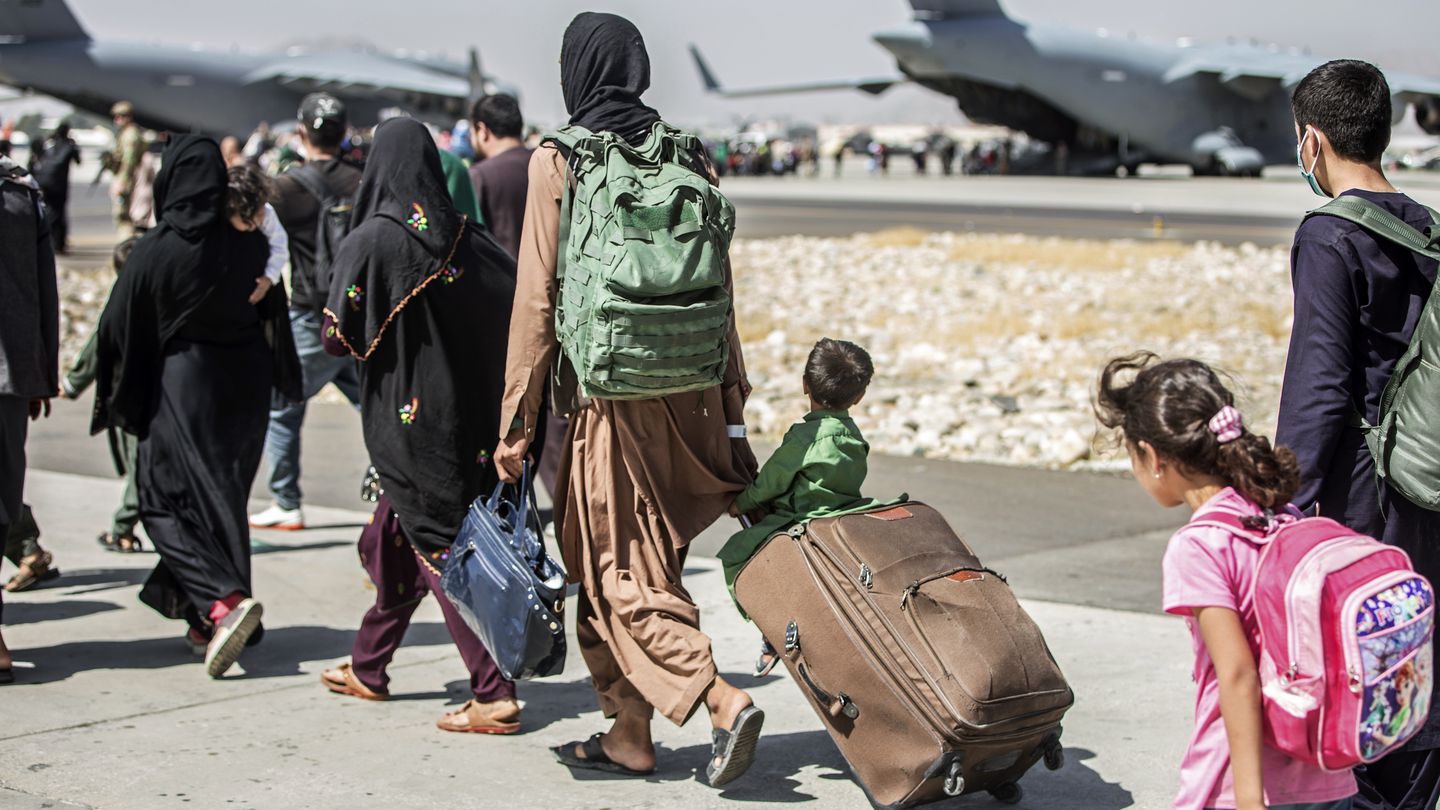The documented lessons learned from the Afghanistan withdrawal became publicly available for the first time on Thursday with the White House’s release of its after action reviews.
The review places significant blame on the Trump administration for its handling of the Afghanistan war and drawdown agreement with the Taliban, which the Biden administration ultimately decided to abide by, according to a 12-page summary posted to the White House’s website.
The complete, classified version of the after action review was provided to lawmakers on Thursday, National Security Council spokesman John Kirby told reporters during a briefing.
The first page of the report offers a round up of actions taken in Afghanistan by the previous administration, including drawing down the U.S. personnel presence from 10,000 troops to 2,500, signing an agreement with the Taliban to withdraw by May 1, 2021, and pressuring the Afghan government to release 5,000 Taliban fighters from prison.
“As a result, when President Biden took office on January 20, 2021, the Taliban were in the strongest military position that they had been in since 2001, controlling or contesting nearly half of the country,” according to the report.
The Biden administration announced in April 2021 that all troops would be withdrawn from the country by that September, having negotiated with the Taliban to hold off beyond the originally agreed upon May 1 date. But it wasn’t until months later that a coordinated effort began to evacuate American citizens and Afghan allies, including those who worked in some capacity with the U.S. government and had applied for special visas.
“Ultimately, the Administration made a decision to engage in unprecedently extensive targeted outreach to Americans and Afghan partners about the risk of collapse,” officials wrote in the report. This effort, the report continued, included “numerous security alerts and tens of thousands of direct phone calls and messages to U.S. citizens in particular to leave Afghanistan, but to not broadcast loudly and publicly about a potential worst-case scenario unfolding in order to avoid signaling a lack of confidence in the ANDSF or the Afghan government’s position.”
Despite their attempts to avoid creating a panic, the Taliban’s advance on Kabul on Aug. 14 destroyed any chance of an orderly drawdown.
What happened next — during the second half of August 2021 — cascaded into a frantic evacuation of more than 120,000 people from Hamid Karzai International Airport in Kabul, culminating in an Aug. 25, 2021, suicide bomber attack at the airport’s main gate. The following day, an errant U.S. strike on what was suspected to be another ISIS target killed 10 civilians, including seven children.
The Biden Administration has acknowledged that its top intelligence officials did not correctly anticipate how fast the Taliban would seize control of Afghanistan as U.S. troops prepared to withdraw, nor did they realize that the Afghan National Defense and Security Forces would crumble under Taliban pressure as quickly as they did.
RELATED
:quality(70)/cloudfront-us-east-1.images.arcpublishing.com/archetype/AJMNZIVURNEV3DERPWRD5SCI4A.jpg)
“I’ve yet to see in intelligence that that ever was 110% certain about something,” Kirby told reporters. “They’ll be the first ones if they were up here to tell you they don’t always get it right.”
Reporters from the Special Inspector General for Afghan Reconstruction did detail the corruption and hollowness of Afghan forces over a number of years, but the official in charge has long lamented that the State Department and Defense Department did not take his office’s findings to heart.
“I’m not super optimistic that we are going to learn our lessons,” he told reporters in February.
The administration has applied some of those lessons, according to Thursday’s release, as recently as the war in Ukraine.
“In a destabilizing security environment, we now err on the side of aggressive communication about risks. We did this in advance of Russia’s invasion of Ukraine,” the report reads. “Months before the invasion, we proactively released intelligence with trusted partners. That engagement broadened — and grew louder and more public — in the weeks leading up to Russia’s invasion.”
The Biden administration took this approach despite objections from the Ukrainian government about “sparking panic,” the report continues.
“However, our clear and unvarnished warnings enabled the United States to take advantage of a critical window before the invasion to organize with our allies, plan the swift execution of our response, and enable Americans in Ukraine to depart safely,” the review noted.
Thursday’s release is part of an ongoing review process, Kirby said. It also includes the work of the Afghanistan War Commission, which convened for the first time earlier this year and is expected to spend four years on its assessments.
“This review was an important step to inform future DoD decision-making, and we will continue to support other reviews, including the Afghanistan War Commission’s efforts to review the full 20 years of the war,” Defense Secretary Lloyd Austin said in a statement after the review’s release.
“I strongly believe that a thoughtful and comprehensive examination of the entirety of America’s longest war by the Commission will be an important contribution to the nation.”
Meghann Myers is the Pentagon bureau chief at Military Times. She covers operations, policy, personnel, leadership and other issues affecting service members.

IL PRIMO ECOMMERCE SPECIALIZZATO IN DELIZIE AL TARTUFO E CAVIALE – CAVIAREAT.COM
